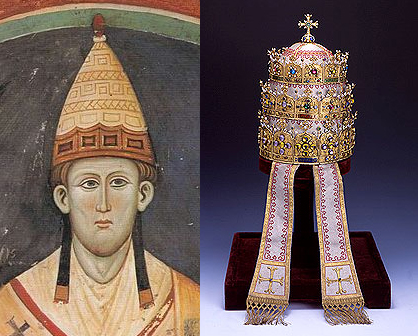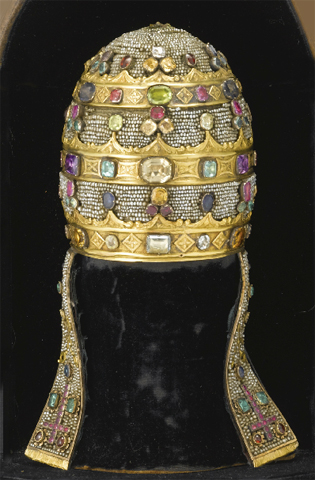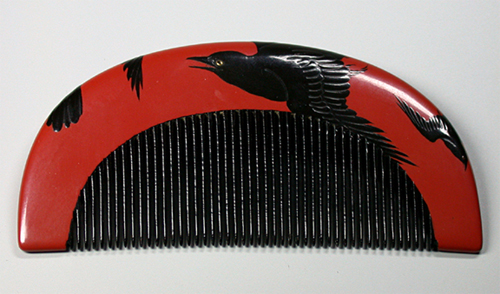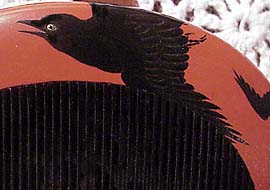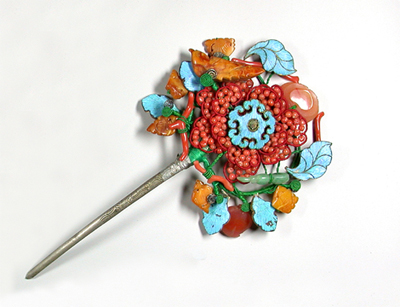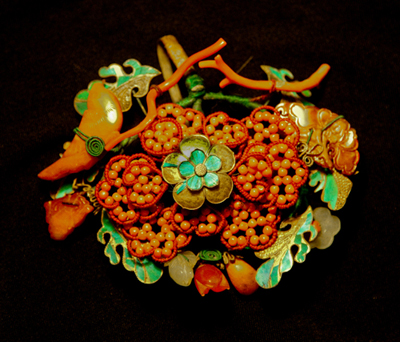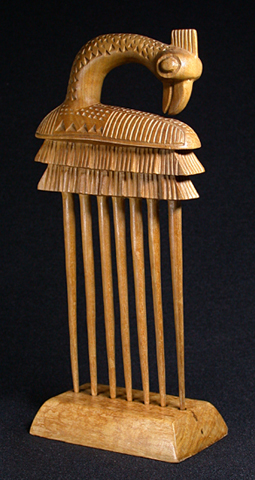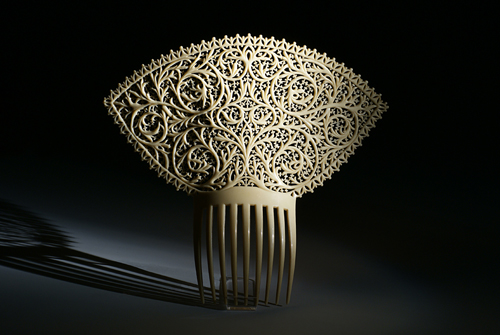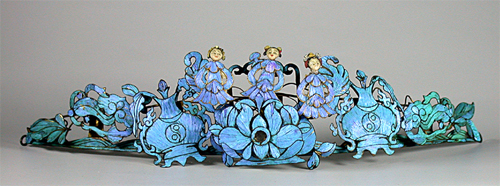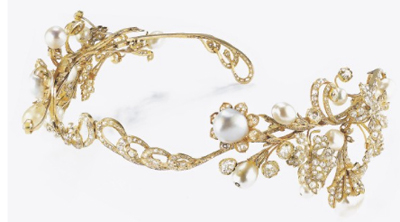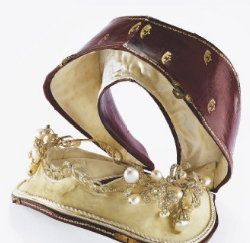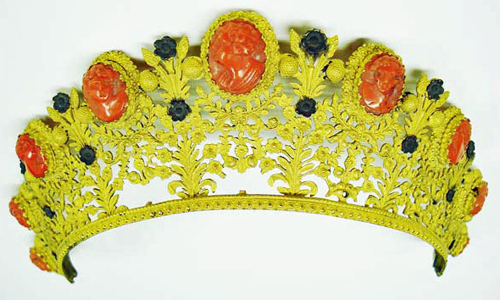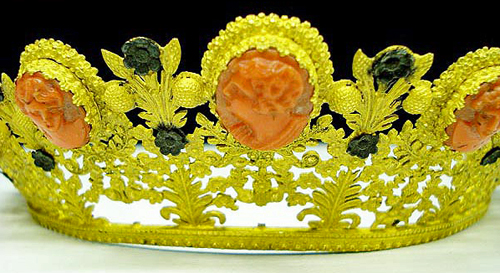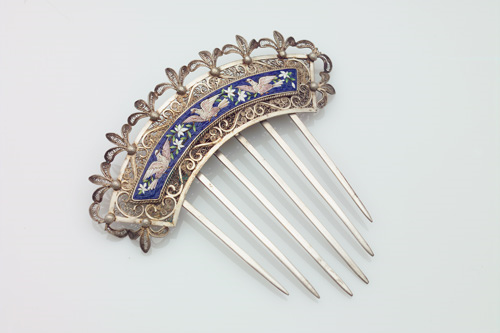Byzantine mosaic techniques can be traced to Late Antiquity, a period between the 2nd and 8th Centuries when the Greco-Roman world was transitioning into the Middle Ages. Later, Byzantine artists were imported to work in Italy during the Renaissance, where they taught Italian artists.
One of the most important materials in making mosaics was tesserae, small cubes of colored glass or clear glass backed by metal foils. Tesserae could also be made from enamel-like materials. The Italians became world renowned for micro-mosaic art, making religious scenes and small objects, such as snuff boxes and jewelry.
In this Italian diadem, c. 1820, two engraved gold serpents intertwine around a micro-mosaic plaque made of glass tesserae. Portraying a classical Greek theme, it sold at Sotheby’s for 4,375 GBP on July 16, 2009.


कंघी
For more scholarly research, please examine
 Micromosaics: The Gilbert Collection |

